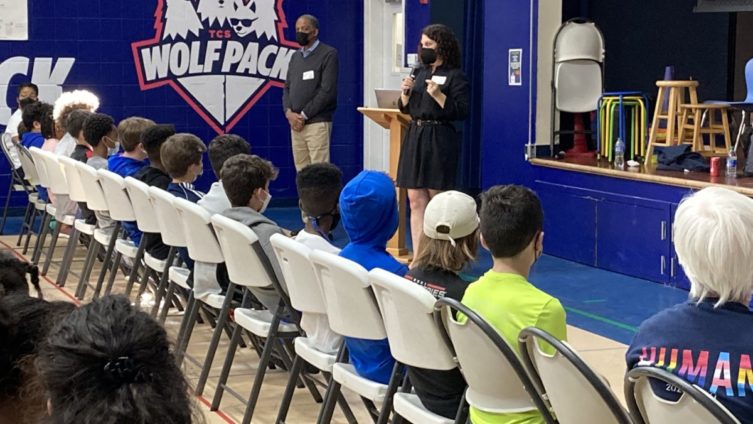
Morgan Darby, Lower School Director of Student Life & Director of Equity and Inclusion
It’s not lost on me that during Women’s History Month, we witnessed Senate confirmation hearings for the historic Supreme Court nomination of Judge Ketanji Brown Jackson – the most distinguished judicial nominee the senate has had the privilege to interview over a four-day period. Judge Jackson has breached barriers to reach the top of the legal profession as a woman and ultimately made history as the first Black woman to sit on our nation’s highest court.
While Title XI turns 50 this year, we have waited 233 years for this history to meet the moment. And, as I reflect on Justice Jackson’s appointment and what it took for her to get there, I know I am not the only one who could easily recall stories from their pasts when they had to “persevere,” “be resilient” and sort out “where do I belong?”
Last month, TCS hosted educational equity researchers Dr. Elizabeth Denevi and Randolph Carter of East Ed, an organization working to connect diversity and equity work to increase achievement for all students. Parents, our middle school students, and faculty and staff all had an opportunity to actively engage and deeply connect with one another through East Ed’s facilitation and storytelling process.
A central theme focused on belonging. Nearly 40 parents joined the afternoon discussion on “Building Community Through Identity Development” when parents were asked to join Zoom breakout groups to answer questions like: “Are parents having conversations with their children about identity?” And, if so, under which circumstances? As you can imagine, there was a range of responses.
While parents of children of color certainly are having these conversations, what resonated with everyone was that not having conversations about identity with your white child wouldn’t be harmful. Instead, it would be powerfully helpful. We all have a role to play in ensuring that difference is seen as just different and not a deficit.
 Our 75 middle school students engaged in their own process as well. Borrowing from Dr. Beverly D. Tatum: “The ABC Approach – Affirming Identity, Building Community, Cultivating Leadership,” students studied the identity development model for racial identity (Cross, 1971) (Helms, 1990) and the cycle of oppression wheel (Figure 1).
Our 75 middle school students engaged in their own process as well. Borrowing from Dr. Beverly D. Tatum: “The ABC Approach – Affirming Identity, Building Community, Cultivating Leadership,” students studied the identity development model for racial identity (Cross, 1971) (Helms, 1990) and the cycle of oppression wheel (Figure 1).
As the students shifted into smaller, mixed-aged groups, our eighth graders then facilitated their small group discussion to unpack this definition of belonging: Belonging is also commonly defined as “the extent to which students feel personally accepted, respected, included, and supported by others in the school social environment.” Our students effortlessly and bravely shared their responses to the questions:
- Think of a time you felt like you did and didn’t belong at TCS?
- How did you feel?
- What did you do?
- How can we help each other own the impact of our words/behavior when we don’t mean to make someone feel like they didn’t belong?
- What can you do to build community and support each other?
Elizabeth and Randolph’s sessions dovetailed with the yearlong and future work our faculty and staff participated in when engaging with the text and its activities in Zaretta Hammond’s “Culturally Responsive Teaching and The Brain: Promoting Authentic Engagement and Rigor Among Culturally and Linguistically Diverse Students.” Through this text, faculty and staff have been reflecting on their own cultural stories to better understand their impact on their students’ [brains] availability for learning, how to build rapport and create trust, and purposefully hold their students to high academic standards.
For resources, please check out :
- https://www.tcsatl.org/blog/family-resources-centering-race-justice-equity/
- https://bookshop.org/lists/tguyl-trans-day-of-visibility-book-nook
- https://bookshop.org/lists/titles-we-all-needed-in-2021
- https://bookshop.org/lists/ya-books-with-bipoc-main-characters
- https://bookshop.org/lists/15-banned-challenged-books-by-bipoc-writers









